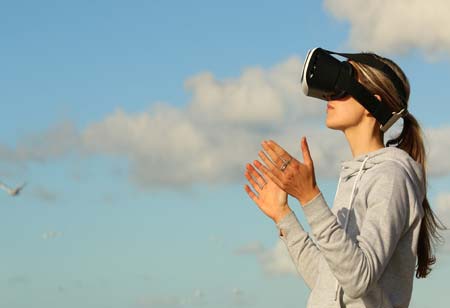THANK YOU FOR SUBSCRIBING
How are Augmented Reality (AR) and Virtual Reality (VR) Transforming the Facets of Education Sector
The trend, on the other hand, hasn't changed in a long time. PowerPoint is still the go-to tool in the education industry.

By
Apac CIOOutlook | Wednesday, October 06, 2021
Stay ahead of the industry with exclusive feature stories on the top companies, expert insights and the latest news delivered straight to your inbox. Subscribe today.
The usual PowerPoint presentation has now got replaced by animation. Many eLearning systems offer classes where an instructor instructs using live animation rather than a static PowerPoint presentation. As a result, the concept of interactive learning, as opposed to one-way learning, is gaining traction.
Fremont CA: Traditional teaching approaches are getting challenged in schools and colleges. Virtual and augmented reality will transform the way teachers teach, and students learn in student learning and development. Over the years, we've seen a lot of changes in the education industry. The trend, on the other hand, hasn't changed in a long time. PowerPoint is still the go-to tool in the education industry.
Augmented Reality
Augmented reality takes advantage of the surroundings by superimposing animations or other forms of information on top of it. In terms of technicality, it adds to the actuality. One of the most appealing aspects of Augmented Reality application development is that it does not necessitate a separate display device. As a result of these advantages, the fourth industrial revolution's technology becomes prevalent.
'A picture is worth a thousand words,' as the saying goes. It's something that augmented reality can help the user with. It will be more efficient to envision the subject rather than read a chapter. It aids pupils in gaining a deeper understanding and insight into the subject. Augmented reality also keeps students interested in new learning by providing engaging experiences.
One of the essential advantages of Augmented Reality in Learning and Development is that it does not necessitate any hardware investment. Instead, users may use their smartphones or tablets to enjoy Augmented Reality. For instance, Augmented Reality app development allows you to position your smartphone camera in front of a textbook and see a 2D image transform into a 3D animation.
Virtual Reality
Virtual reality, on the other hand, takes place in a wholly manufactured setting. So, to create VR software, we must first create an environment and then add motion to it. As a result, virtual reality appears to be far more accurate than Augmented Reality, contrary to its name. However, it does have the drawback of requiring a specific VR headgear to operate any program.
Virtual reality has the potential to transform the educational landscape completely. From kindergarten to college, virtual reality will get employed in the classroom. Students can view immersive content on any topic using virtual reality goggles. Furthermore, a 360-degree perspective of any content gives pupils a more genuine feeling of being a part of the virtual environment. Interaction with VR information also allows people to delve further into the subject. Students cannot be distracted by the actual world while they are too engrossed in the virtual world. It also enhances their ability to concentrate.
VR gives students a whole sensory experience, allowing them to virtually touch, see, and hear the subject while using assistive technology.





